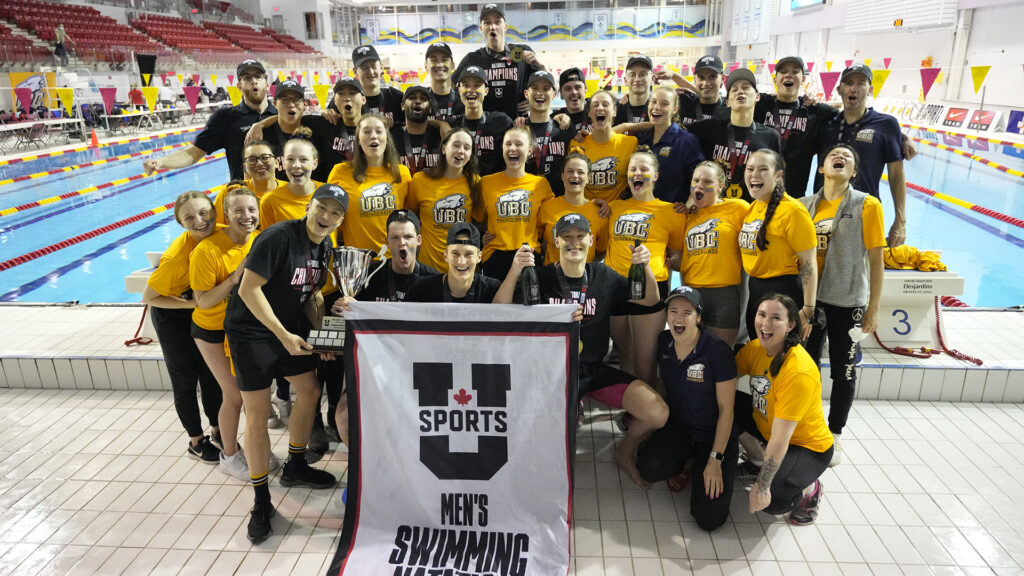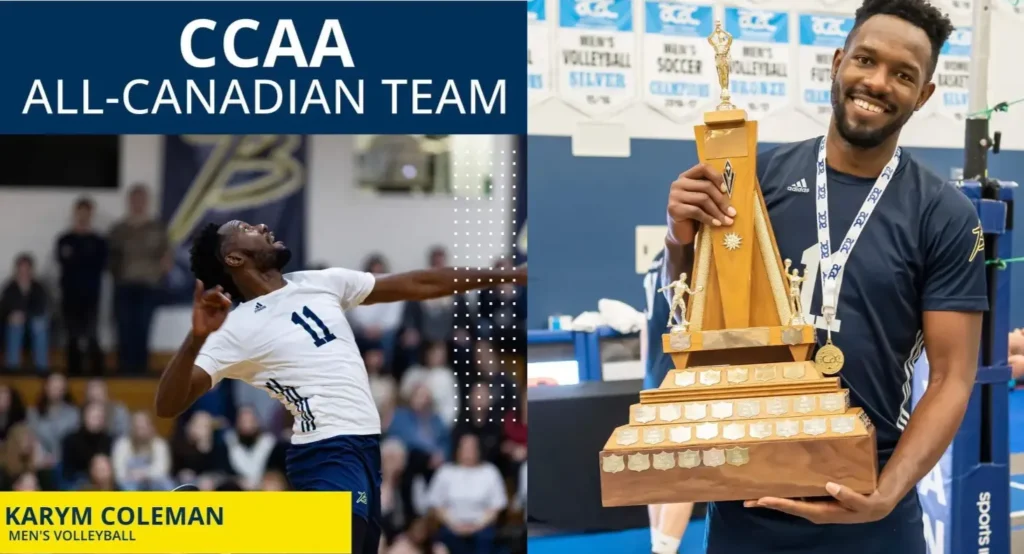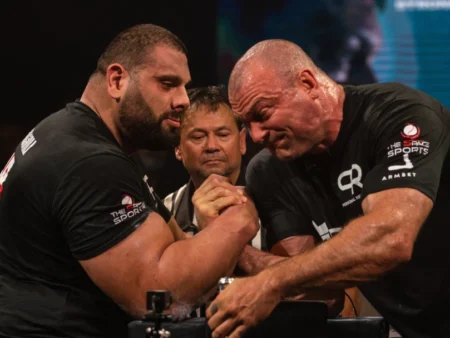Explore famous athletes who started their careers in colleges, the role of U Sports and CCAA, and the future of college sports in Canada.
The Rise of College Sports in Canada: Unveiling Athletic Powerhouses
Contents
- 1 Introduction
- 2 Most Popular Sports in Canadian Colleges
- 3 Famous Athletes Who Started Their Careers in Canadian Colleges
- 4 The Role of U Sports, CCAA, and Similar Organizations
- 5 Challenges and Opportunities in Canadian College Sports
- 5.1 Funding and Resources
- 5.2 Facilities and Infrastructure
- 5.3 Talent Development and Recruitment
- 5.4 Media Coverage and Fan Engagement
- 5.5 The Future of College Sports in Canada
- 5.6 Potential Growth and Expansion of Collegiate Sports
- 5.7 Equity, Diversity, and Inclusion
- 5.8 Professional Pathways and Alumni Support
- 6 Conclusion
Introduction
In recent years, college sports in Canada have experienced a remarkable surge in popularity and significance. With a diverse sports landscape and a passionate collegiate fanbase, Canadian colleges have become breeding grounds for exceptional athletes. This article explores the most popular sports in Canadian colleges, showcases famous athletes who launched their careers in these institutions, and examines the pivotal role of organizations such as U Sports, CCAA, and regional collegiate athletic associations in shaping the landscape of college sports in the country.
Most Popular Sports in Canadian Colleges
Ice Hockey: A National Obsession and Breeding Ground for Future NHL Stars
Ice hockey holds a cherished place in Canadian culture and is a focal point of college athletics. Men’s and women’s ice hockey programs thrive in colleges across the country, serving as talent incubators for future NHL players. Notable collegiate programs like the University of Alberta and McGill University have made indelible impacts on the sport. Remarkable success stories abound, with NHL stars like Sidney Crosby, Marie-Philip Poulin, and Jonathan Toews honing their skills in Canadian colleges.
Basketball: A Thriving Sport with a Growing Following
Basketball has experienced a significant rise in popularity within Canadian colleges. Both men’s and women’s basketball have emerged as major attractions, drawing enthusiastic fans. Noteworthy Canadian college basketball programs, such as Carleton University and the University of Windsor, have achieved remarkable accomplishments, contributing to the sport’s growth. Athletes like Steve Nash, Kia Nurse, and Andrew Wiggins embarked on successful careers after making their mark in the college system.
Soccer: Bridging the Gap to Professional Leagues
Soccer has witnessed rapid growth in Canadian colleges, with men’s and women’s programs gaining prominence. Collegiate soccer programs, including the University of British Columbia and Cape Breton University, have played pivotal roles in advancing the sport. Renowned Canadian soccer players like Christine Sinclair, Alphonso Davies, and Janine Beckie began their journeys in college, showcasing the significant contributions of college soccer to the professional arena.
Canadian Football: Cultivating Talent for the CFL
Canadian football holds a unique place in college sports, serving as a vital pipeline for the Canadian Football League (CFL). Prominent Canadian football programs, including the University of Western Ontario and Laval University, have made substantial contributions to the sport. CFL stars like Doug Flutie, Jon Cornish, and Andrew Harris have emerged from the Canadian college football system, underscoring its importance in developing talent for professional play.
Famous Athletes Who Started Their Careers in Canadian Colleges
Basketball
- Steve Nash, a two-time NBA MVP, showcased his incredible talent during his collegiate career at Santa Clara University. Nash’s exceptional skills and leadership propelled him to become one of the greatest point guards in NBA history.
- Kia Nurse, a standout player at the University of Connecticut, led her team to multiple NCAA championships and solidified herself as a key figure in women’s basketball. She now represents Canada on the international stage.
- Andrew Wiggins’ explosive athleticism and scoring prowess were on full display during his college years at the University of Kansas. He quickly rose to prominence and became the first overall pick in the 2014 NBA Draft.
Ice Hockey
- Sidney Crosby, widely regarded as one of the greatest hockey players of his generation, honed his skills in the competitive environment of Cole Harbour High School and then seamlessly transitioned to the Quebec Major Junior Hockey League (QMJHL). Crosby’s exceptional talent and leadership abilities propelled him to NHL superstardom.
- Marie-Philip Poulin, a renowned Canadian women’s ice hockey player, showcased her immense talent during her collegiate years at Boston University. Her exceptional play and clutch performances have made her a household name in international ice hockey, with multiple Olympic gold medals to her name.
- Jonathan Toews made a lasting impact during his college career at the University of North Dakota. His impressive skill set and leadership qualities on the ice propelled him to become one of the most respected captains in the NHL, leading the Chicago Blackhawks to multiple Stanley Cup victories.
Soccer
- Christine Sinclair, widely regarded as one of the greatest women’s soccer players of all time, began her remarkable journey at the University of Portland. Sinclair’s incredible goal-scoring ability and leadership skills have made her an inspiration to aspiring soccer players in Canada and around the world.
- Alphonso Davies, a prodigious talent, made waves in Canadian soccer with his time in the Vancouver Whitecaps Residency Program before securing a move to European powerhouse Bayern Munich. Davies’ lightning speed, versatility, and technical prowess have established him as a rising star in the global soccer scene.
- Janine Beckie, a dynamic forward, honed her skills during her collegiate career at Texas Tech University. Beckie’s goal-scoring ability and relentless work ethic have earned her a spot on the Canadian women’s national team and professional success both domestically and internationally.
Canadian Football
- Doug Flutie’s collegiate career at Boston College showcased his exceptional talent and earned him the prestigious Heisman Trophy. Flutie’s success in college football paved the way for his illustrious professional career, including stints in the CFL and NFL.
- Jon Cornish’s journey to CFL excellence began with his standout career at the University of Kansas. Cornish’s exceptional running abilities and determination propelled him to become one of the greatest Canadian running backs in CFL history, earning him numerous accolades and championships.
- Andrew Harris’ path to CFL stardom started with his time in the Canadian Junior Football League. His exceptional skills and work ethic led him to succeed in college and ultimately become a key figure in the CFL, winning championships and earning recognition as one of the league’s top running backs.
The Role of U Sports, CCAA, and Similar Organizations
U Sports: Unifying Canadian University Sports
U Sports plays a vital role in supporting college athletics in Canada. As the national governing body for university sports, U Sports organizes national championships, provides opportunities for student-athletes to excel academically and athletically, and promotes healthy competition among member institutions. Through their programs and initiatives, U Sports has fostered the growth and development of college sports in the country.

CCAA: The Governing Body for Collegiate Athletics
The Canadian Collegiate Athletic Association (CCAA) serves as the governing body for collegiate athletics at the community college level in Canada. The CCAA provides support and guidance to member institutions, promoting sports participation and providing opportunities for athletes to compete at the collegiate level. The organization plays a crucial role in fostering a vibrant sports culture within community colleges and ensuring the development of well-rounded student-athletes.

Similar Organizations: Enhancing College Sports Participation
In addition to U Sports and CCAA, regional and provincial collegiate athletic associations play a significant role in promoting college sports participation in Canada. Organizations such as the Ontario Colleges Athletic Association (OCAA), Atlantic Collegiate Athletic Association (ACAA), Alberta Colleges Athletic Conference (ACAC), and others are instrumental in organizing intercollegiate competitions and providing opportunities for athletes at the regional and provincial levels. These associations showcase notable achievements and success stories from colleges affiliated with them, contributing to the overall growth and recognition of college sports.
Challenges and Opportunities in Canadian College Sports
Funding and Resources
One of the key challenges faced by college sports programs in Canada is securing adequate funding and resources. Many programs operate on limited budgets, hindering their ability to provide top-notch facilities, equipment, and coaching staff. Addressing this issue requires increased support from sponsors, donations, and government funding to ensure that student-athletes have the necessary resources to excel both academically and athletically.
Facilities and Infrastructure
The availability and quality of sports facilities in Canadian colleges are critical to athlete development and fan engagement. Upgrading and expanding sports infrastructure, including training facilities, stadiums, and arenas, is essential to attract top-tier athletes and provide a captivating experience for fans. Collaborations between colleges, governments, and private entities can help address this challenge and create a more conducive environment for college sports.
Talent Development and Recruitment
Identifying and nurturing young athletic talent is crucial for the sustained growth of college sports. Establishing robust scouting, recruitment, and talent identification programs can help colleges attract promising athletes and create pathways for their development. Collaboration between colleges and sports associations can facilitate talent development programs and strengthen the talent pool for college sports in Canada.
Media Coverage and Fan Engagement
Increased media coverage plays a vital role in elevating the profile of college sports. Broadcasting games, streaming matches online, and leveraging social media platforms can enhance fan engagement and attract a wider audience. Building a strong college sports culture requires proactive marketing, fan-friendly initiatives, and community involvement to generate enthusiasm and increase attendance at games.
The Future of College Sports in Canada
Potential Growth and Expansion of Collegiate Sports
The future of college sports in Canada holds immense potential for growth and expansion. While traditional sports like ice hockey and basketball continue to thrive, there are opportunities to tap into other sports with untapped potential for college-level participation. Additionally, cross-disciplinary collaborations and emerging sports trends present exciting possibilities for further diversifying the college sports landscape.
Equity, Diversity, and Inclusion
Promoting equity, diversity, and inclusion within Canadian college sports is essential. Efforts should be made to ensure gender equality, provide support for underrepresented groups, and create an inclusive and welcoming environment for all student-athletes. Implementing initiatives that encourage participation from diverse backgrounds and providing resources for marginalized communities will contribute to a stronger and more inclusive college sports community.
Professional Pathways and Alumni Support
Enhancing career opportunities and transition support for student-athletes after their college careers is crucial. Establishing stronger connections between college sports programs and professional leagues, creating mentorship programs, and building alumni networks can facilitate the seamless transition of athletes into professional sports or other career paths. By providing guidance, resources, and networking opportunities, colleges can play an active role in helping their student-athletes succeed beyond their collegiate years.
Conclusion
The rise of college sports in Canada has been a remarkable journey, showcasing the passion, talent, and dedication of student-athletes across the nation. From ice hockey and basketball to soccer and Canadian football, collegiate programs have become breeding grounds for future stars, shaping the landscape of Canadian sports.
Through the notable achievements of athletes who started their careers in Canadian colleges, such as Steve Nash, Sidney Crosby, Christine Sinclair, and Alphonso Davies, it is evident that these institutions play a vital role in athlete development and serve as launching pads for successful professional careers.
The efforts of organizations like U Sports, CCAA, and regional collegiate athletic associations have been instrumental in unifying college sports, providing opportunities for competition, and supporting the growth and development of student-athletes both on and off the field.
However, challenges such as funding, facilities, talent recruitment, and media coverage must be addressed to further enhance the college sports experience in Canada. By investing in resources, upgrading infrastructure, implementing effective recruitment strategies, and increasing media visibility, colleges can elevate the profile of their programs and attract top-tier talent.
Looking ahead, the future of college sports in Canada is bright. With untapped potential in emerging sports, a commitment to equity, diversity, and inclusion, and the establishment of strong professional pathways and alumni support, the college sports landscape is poised for continued growth and success.
It is essential for fans, institutions, and stakeholders to rally behind Canadian college sports, providing support, engagement, and resources to ensure the sustained development and recognition of these athletic powerhouses.
As college sports in Canada continue to flourish, they will not only shape the careers of exceptional athletes but also inspire generations, foster a sense of community, and contribute to the rich tapestry of Canadian sports culture.
- A Guide to Gambling Self-Exclusion in Canada - July 29, 2024
- Maximize Your ROI in Sports Betting: Expert Tips - July 16, 2024
- How to Make the Most of Canadian Bets: A Comprehensive Guide - June 18, 2024




